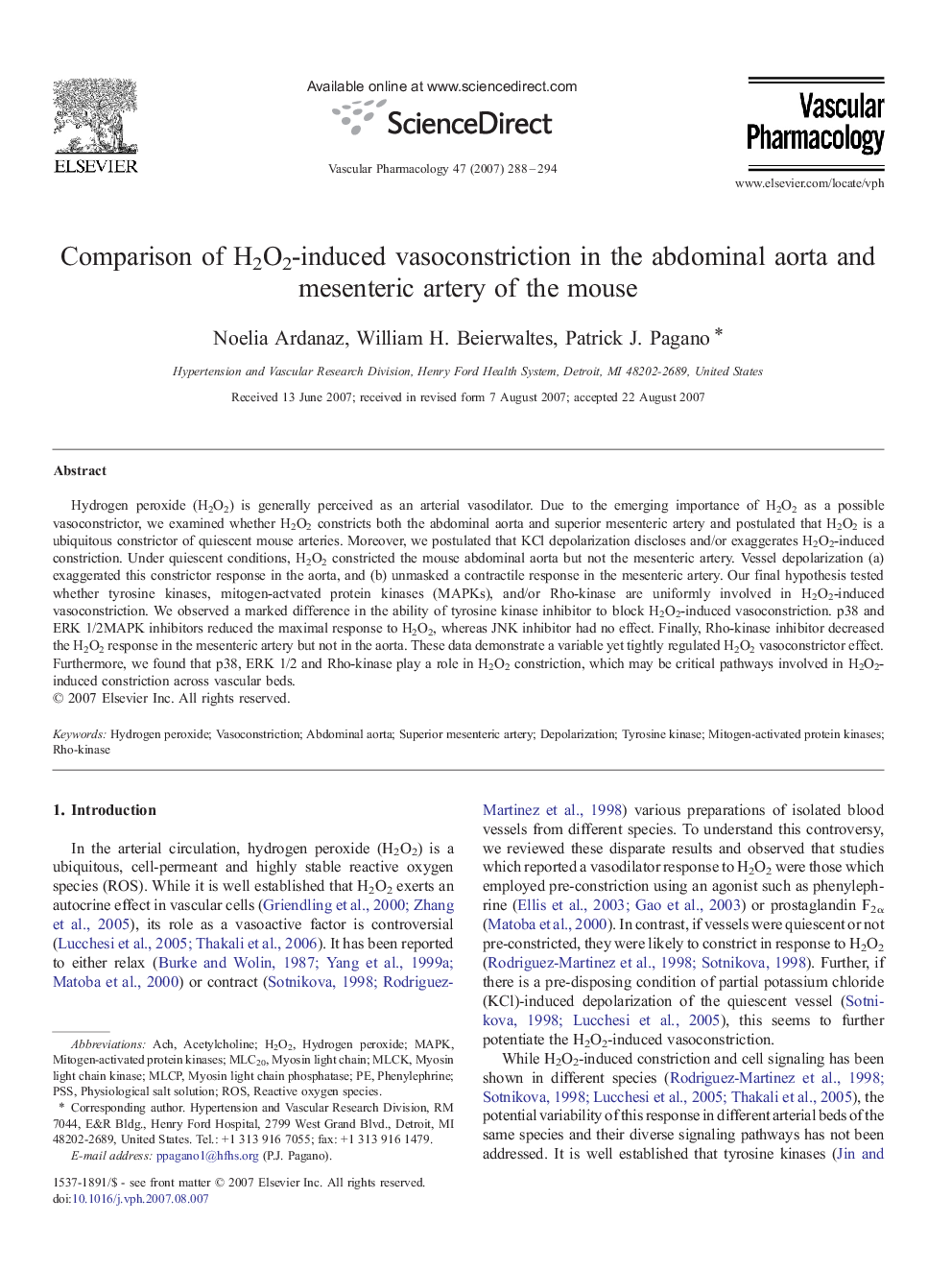| Article ID | Journal | Published Year | Pages | File Type |
|---|---|---|---|---|
| 2574865 | Vascular Pharmacology | 2007 | 7 Pages |
Hydrogen peroxide (H2O2) is generally perceived as an arterial vasodilator. Due to the emerging importance of H2O2 as a possible vasoconstrictor, we examined whether H2O2 constricts both the abdominal aorta and superior mesenteric artery and postulated that H2O2 is a ubiquitous constrictor of quiescent mouse arteries. Moreover, we postulated that KCl depolarization discloses and/or exaggerates H2O2-induced constriction. Under quiescent conditions, H2O2 constricted the mouse abdominal aorta but not the mesenteric artery. Vessel depolarization (a) exaggerated this constrictor response in the aorta, and (b) unmasked a contractile response in the mesenteric artery. Our final hypothesis tested whether tyrosine kinases, mitogen-actvated protein kinases (MAPKs), and/or Rho-kinase are uniformly involved in H2O2-induced vasoconstriction. We observed a marked difference in the ability of tyrosine kinase inhibitor to block H2O2-induced vasoconstriction. p38 and ERK 1/2MAPK inhibitors reduced the maximal response to H2O2, whereas JNK inhibitor had no effect. Finally, Rho-kinase inhibitor decreased the H2O2 response in the mesenteric artery but not in the aorta. These data demonstrate a variable yet tightly regulated H2O2 vasoconstrictor effect. Furthermore, we found that p38, ERK 1/2 and Rho-kinase play a role in H2O2 constriction, which may be critical pathways involved in H2O2-induced constriction across vascular beds.
